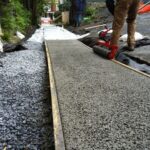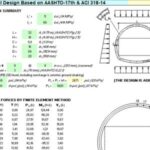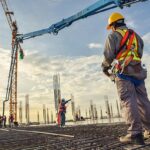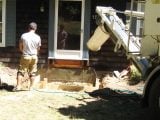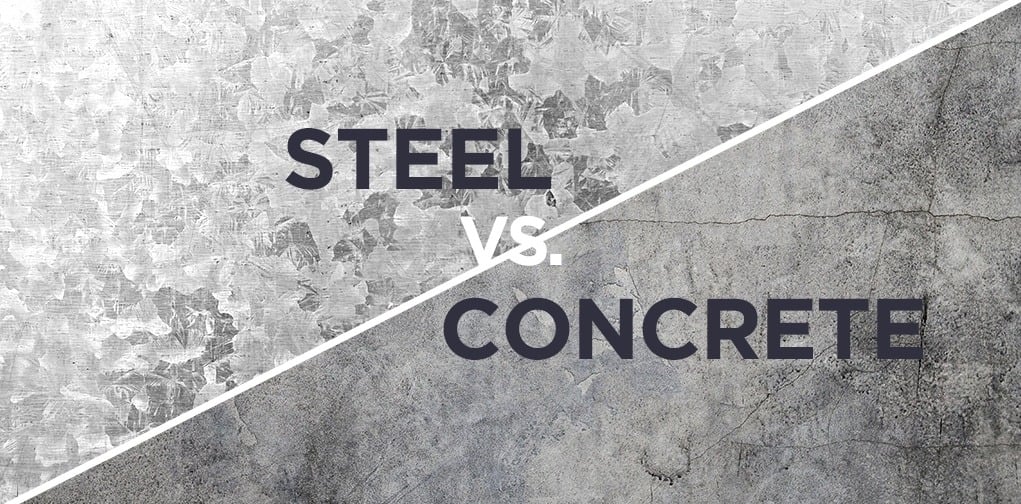
What is better steel or concrete?
15 March 2019Table of Contents
What is better steel or concrete?
Construction projects require many decisions. A key decision is to find the most effective option, as well as determining which process could produce ideal results.
Take a look at this breakdown. This example weighs the pros and cons of Structural Steel versus Concrete.
Costs

Structural Steel: A large majority of all steel manufactured today comes from recycled materials; A992 steel. This recycling usage makes the material much cheaper when compared to other materials. Although the price of steel can fluctuate, it typically remains a less expensive option compared to reinforced concrete.
Concrete: A large cost benefit to concrete is the fact that its price remains relatively consistent. On the other hand, concrete also requires ongoing maintenance and repairs, meaning added costs throughout its lifetime. Supply-and-demand may also impact the availability of concrete. Even though it can be poured and worked with directly onsite, the process to completion can be lengthy and could accrue higher labor costs.
Strength
Structural Steel: Structural steel is extremely strong, stiff, tough, and ductile; making it one of the leading materials used in commercial and industrial building construction.
Concrete: Concrete is a composite material consisting of cement, sand, gravel and water. It has a relatively high compressive strength, but lacks tensile strength. Concrete must be reinforced with steel rebar to increase a structure’s tensile capacity, ductility and elasticity.
Fire Resistance
Structural Steel: Steel is inherently a non-combustible material. However, when heated to extreme temperatures, it’s strength can be significantly compromised. Therefore, the IBC requires steel to be covered in additional fire resistant materials to improve safety.
Concrete: The composition of concrete makes it naturally fire resistant and in line with all International Building Codes (IBC). When concrete is used for building construction, many of the other components used in construction are not fire resistant. Professionals should adhere to all safety codes when in the building process to prevent complications within the overall structure.
Sustainability

Structural Steel: Structural steel is nearly 100% recyclable as well as 90% of all Structural Steel used today is created from recycled steel. Due to its long lifespan, steel can be used as well as adapted multiple times with little to no compromise to its structural integrity. When manufactured, fabricated and treated properly, structural steel will have a minimal impact on the environment.
Concrete: The elements within concrete are natural to our environment, reducing the harm to our world. Concrete may be crushed and used in future mixtures. This type of recycling can reduce a presence of concrete in landfills.
Versatility
Structural Steel: Steel is a flexible material that can be fabricated into a wide array of designs for endless applications. The strength-to-weight ratio of steel is much higher when compared to other affordable building materials. Steel also offers many different aesthetic options that different materials, such as concrete, cannot compete with.
Concrete: Although concrete can be molded into many different shapes, it does face some limitations when it comes to floor-to-floor construction heights and long, open spans.
Corrosion

Structural Steel: Steel may corrode when it comes into contact with water. If left without proper care, it could affect the safety and security of a structure. Professionals should care for the steel with such processes such as water-resistant seals and paint care. Fire-resistant features may be included when water-resisting seals are applied.
Concrete: With proper construction and care, reinforced concrete is water resistant and will not corrode. However, it’s important to note that the steel reinforcement inside should never be exposed. If exposed, the steel becomes compromised and can easily corrode, compromising the strength of the structure.
Reference : blog.swantonweld.com

